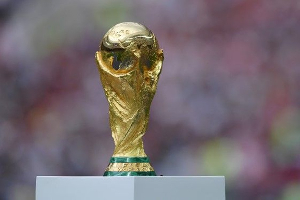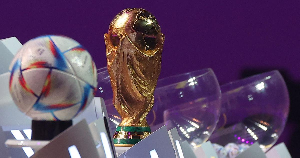Opinions of Sunday, 26 June 2016
Columnist: The Mirror
Driving in the dark
Poor headlights have caused many accidents and claimed so many lives around the globe, with Ghana being no exception. The condition of the headlights of any vehicle can make the difference between life and death in everyday driving situations.
In spite of the importance of having headlights that meet the correct illumination, brightness and safety standards, the case cannot be said for vehicles plying our roads today – private and commercial vehicles alike.
Correct lighting
It is illegal to drive any motor vehicle on public roads after dark without using the correct lighting equipment. This includes headlights, tail lights, and license plate lights.
Parking lights should be used for parking only – they are not a substitute for headlights because they are not considered strong enough, even in the hours just after sunrise and before sunset.
You must have your lights on from sunset until sunrise during periods of rain, fog or mist, and during other periods when you cannot see the road ahead of you clearly for a distance of at least 150 metres.
When you are in doubt as to whether you should use your lights or not, you need to turn them on at low beam at least. Not only will this improve your own vision, it helps others to see you as well.
Overdriving
One of the most common and dangerous habits that a driver can get into at night is "overdriving" the headlights of their vehicle.
One should never drive so fast that you are unable to stop within the distance that you can clearly see on the road ahead of you by the light of your vehicle’s head lamps.
For most vehicles this distance is no more than 100 metres when the headlights are on high beam. In bad weather or other driving conditions when your ability to see clearly is decreased, this distance can be much less, especially as slippery road conditions add to an already unsafe driving situation.
Some common problems with headlights are poor illumination due to hazy or yellowish lights, broken headlamps, burnt-out bulbs and misalignment of the beam.
The dominant issue, however, with headlights is their eventual yellowish, hazy and dull appearance due to oxidation. The obvious questions are the following – what causes the headlights to turn yellow; what precautions can one take to prevent yellowing; and do they need to be replaced?
Yellow headlights
Headlights turn yellow or become discoloured and cloudy due to oxidation. This is simply the chemical reaction of oxygen with substances, objects and elements that ultimately change the appearance. Oxidation is the result of ultra-violet (UV) damage caused by the sun.
Brand new vehicles usually come with headlights that are pre-coated with a protective UV coat that is designed to absorb the sun's damaging UV rays.
Over time this UV coat begins to break down, becoming less effective at blocking and absorbing the UV rays.
This is why it is rare to find a newer vehicle with clouded or yellowed headlights. The process is gradual and can take several years, but it can be accelerated by car owner neglect.
Oxidation begins with the headlights looking slightly foggy or dirty, until they become more discoloured with a yellowish tint. Visual clarity is greatly reduced at night, and the appearance of your headlights may reduce the aesthetic value of your car.
With extreme oxidation, one can no longer see the inside of headlamps, and the range of the headlight beam is significantly reduced.
Do I need to replace my headlights?
A headlights replacement decision must be considered alongside other factors such as the headlights that are broken or those with extensive and multiple cracks.
If they are simply discoloured, then for sure they can be restored. If the oxidation damage is only minor, there's really no need for a full replacement.
For minor damage around the edges, one has to urgently seal the headlight assembly to prevent moisture from getting in.














